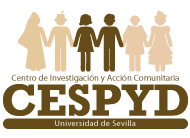Publicaciones
Contributions of the Liberating Community Psychology Approach to Psychosocial Practice on Sexual and Gender Diversity
Referencia: Garrido R. & Zaptsi A. (2022). Contributions of the Liberating Community Psychology Approach to Psychosocial Practice on Sexual and Gender Diversity. In: Chaparro R. A. & Prado M. A. M. (eds) Latinx Queer Psychology. Springer, Cham. https://doi.org/10.1007/978-3-030-82250-7_2.
Resumen: Liberation psychology is possibly the biggest contribution of Latin America to psychosocial science. It was officially born in 1965 in the USA, where some critical psychologists held a conference expressing their discontent with the dominant medical model in mental health practice. Notwithstanding, since the 1950s, Latin America had already fostered community and methodological developments that were proven to be the foundational bases of this discipline. This chapter describes the Liberating Community Psychology Approach (LCPA) and its contributions to psychosocial practice on LGBTQ+ issues. First, putting in value respect for diversity and intersectionality. Second, assuming the importance of the context as an ecological multilevel environment identifying influenced factors for LGBTQ+ people and communities at individual, relational, organizational, community, and macro-social level. Third, recognizing the impact of the distribution of power on social justice and well-being. Lastly, adopting a strength-based perspective understanding and promoting resilience and empowerment processes of sexual and gender minorities. Moreover, the model of community cultural competence is presented as a framework by which professionals develop critical thinking and competencies that allow them to be effective in their work with minorities from the LCPA. Finally, major theoretical contributions and suggestions improving action and research regarding LGBTQ+ issues are discussed.
Palabras clave: Liberation psychology, Community psychology, LGBTQ+, Heterosexism, Equity, Community cultural competence.
Publicación completa: https://link.springer.com/chapter/10.1007/978-3-030-82250-7_2.
